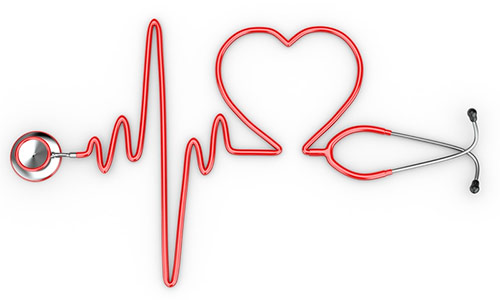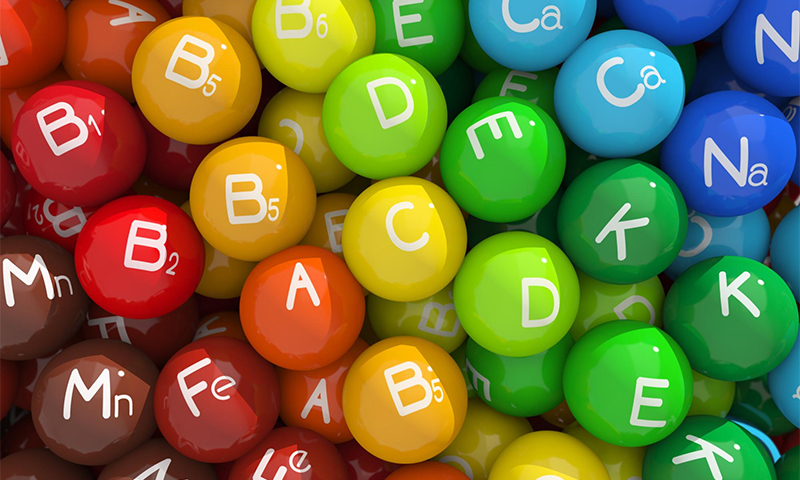Every woman wants to look great always and under any circumstances. But there are times when there is no time to visit the salon, and you have to do a quick manicure at home. To simplify this procedure, you can use a special apparatus that will gently remove coarse skin and smooth out the irregularities of the nail plate. These are used by nail masters in beauty salons, but with our advice you will be able to pick up a manicure machine for home use.
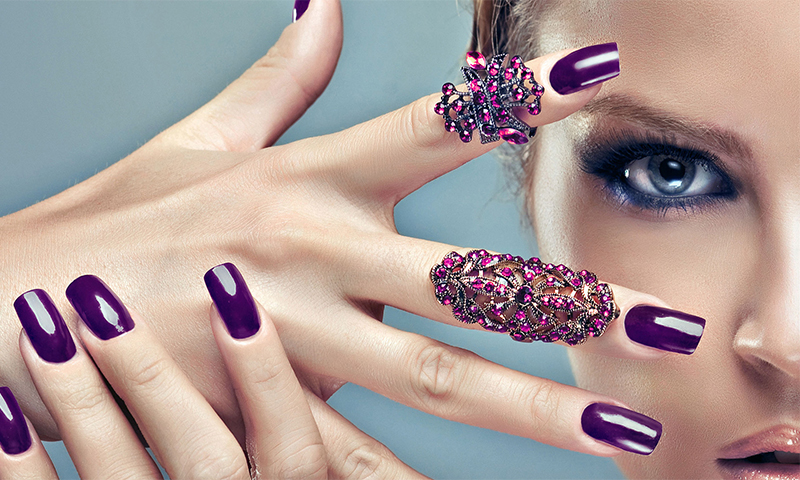
Content:
The best manufacturers of manicure machines - which company to choose
Choosing a manicure machine is important not to make a mistake and buy a really good and durable model. Therefore, let us outline the circle of producers for whose products it is worth being guided.
The following companies produce reliable equipment for home and salon beauty procedures:
- Polaris;
- Scholl;
- Rowenta;
- Beurer;
- Strong.
You will find a detailed review of popular devices for hardware manicure from these manufacturers in our ranking. And for those who wish to better understand the topic and learn how to independently determine the quality of the models presented on sale, we suggest to listen to the advice of experts.
The principle of operation and device manicure apparatus

The manicure device is essentially a re-trained boron machine, only very compact and designed for more pleasant procedures. With this device you can easily and quickly remove the hardened skin on the fingers, give shape and shine to the nail plate.
The device itself consists of several main parts:
1. Body-handle;
2. Built-in motor;
3. Speed controller;
4. Battery pack or network cable.
Included with any device for manicure are various nozzles: for processing the cuticle, nail polishing and removal of corns. In professional and advanced models, there can also be a built-in vacuum cleaner that retracts the saw during operation and a foot pedal to adjust the speed.
When the device is turned on, the motor causes the abrasive nozzle to rotate at high speeds, and it, in turn, cuts off keratinized skin and nails that require correction. Depending on the power of the built-in engine, the number of revolutions of the cutter can vary from 5 to 60 thousand rpm.
Types of devices for manicure
Apparatus for home manicure

Many women do manicures at home, but not everyone has the skills of a master. Using the salon instruments, you can easily overdo it and damage the nail or skin, so it is better to look at compact devices for home use. They are not as powerful, but their functions are enough for a full-fledged manicure.
These machines are able to rotate the cutters with a speed of up to 20 thousand rpm, perfectly remove coarse skin, calluses and cuticle, and soft silicone or lint tips will polish the nail plate removing all flaws and irregularities.
Devices for home manicure can run on batteries or built-in battery, are distinguished by their convenient shape and low weight.
Pros:
- Low cost;
- Compact and lightweight;
- The presence of the most necessary cutters in the kit, including for a pedicure;
- Safe enough;
- Autonomous - do not have to be confused in the wires or sit at the outlet.
Minuses:
- Nozzles are made of fragile material and are not designed for long-term use;
- Requires frequent replacement of batteries, but with rechargeable batteries, this problem fades into the background;
- On sale a lot of low-quality Chinese-made machines.
Professional manicure machines

Devices for salons and professional craftsmen largely benefit from compact "home" machines. Their power is much higher, and the number of revolutions of the cutters ranges from 35-60 thousand rev / min.
Included with them is always attached a large set of wear-resistant tips that will help to make the perfect manicure and pedicure.
Pros:
- High power (from 60 to 100 V) and rotational speed;
- They may have a built-in vacuum cleaner to remove dust and nail saw;
- Existence of a convenient pedal switch of speed;
- Overheat protection;
- Durability and reliability;
- A wide selection of tips for manicure and pedicure;
- The ability to work with both natural and artificial nails.
Minuses:
- More cumbersome and heavy compared to the "home" models;
- Professional equipment is not cheap.
Manicure device selection parameters

Power and speed of rotation of mills
This is the main criterion for choosing any model. The speed of work and the quality of nail processing depend on the power of the device: the faster the cutter rotates, the better.
1. For home appliances, there is usually enough power up to 60 W and 20-30 thousand turns of the nozzle per minute.
2. Professional models should have a power in the range of 60-100 W and transfer a speed of at least 40 thousand rpm to the mill.
Weight and shape
All manicure machines (at least, their working part) are similar to a marker or marker and differ only in thickness. At first glance, this is a trifle, but in fact it is very important to choose a convenient device under your arm. To do this, hold the device in your hands, twist and make sure that this model is suitable for you.
The weight of the machine also determines the ease of use, but depends on the purpose of the model:
1. High-quality professional devices can reach up to 2 kg, however, due to the stationary part of the body.
2. Compact "home" devices on batteries weigh much less - from 150 grams.
When buying, do not forget to check the device in the on state: a good device should not jump and jump in your hands. A light, non-discomforting vibration is allowed, but it is still better that it does not exist.
Quantity and quality of nozzles
Included even to the most budget device always comes a lot of nozzles of various shapes and grains.
Consider the most necessary:
1. Cutter for lifting and removing the cuticle - there are a lot of good reviews about it: it copes with its tasks perfectly and at the same time does not hurt the skin.
2. Flat nozzles for removing horny areas and dry corns are not in all sets, but if you plan to use the device for a pedicure, you will definitely need them.
3. Conical cutters for dealing with calluses and ingrown nails.
4. Polishing nozzles to give shine and smoothing the surface of the nail.
5. Large cylindrical cutters - needed for processing thick nail plates on the legs.
6. Brushes for cleaning nails and skin.
If some necessary attachments are not included, they can be purchased separately, but it is better to take a complete set at once - it will be cheaper. It is necessary to pay attention not only to the number of nozzles, but also to the quality of their coverage.
Manufacturers use different materials for the manufacture of abrasive cutters:
1. Ceramic
Designed for beginners, they are considered gentle and safer. Such mills can have several grains from 100 to 400 microns. The stiffness of the nozzles can be identified by color: blue and pink are the softest, black is hard, white is somewhere in the middle.
Ceramic cutters are ideal for processing side rollers, cuticle, nail surface. During a pedicure, they can be used to remove corns and cracks.
2. Diamond
Often used for the treatment of the free edge of the nail, as well as for the removal of coarse skin, small corns, cuticle.
Nozzles with such a coating will last longer than ceramic, although they are cheaper. Stiffness here is also denoted by colored notches, although the “palette” is more diverse. Black color indicates the maximum rigidity of the nozzle, blue only approaches this indicator, and yellow, red and green notches are applied to soft and medium hardness cutters.
3. Silicone
Relatively soft products made of silicone and silicone-carbide are used to polish natural and acrylic nails.
In addition to the considered abrasive cutters, manufacturers offer replaceable pumice caps that can be put on special rubber nozzles. They are designed to remove corns and cracks in the legs, but are disposable.
Additional options
1. In addition to the basic functions, the device can be equipped with a backlight, unfortunately, absolutely useless. Due to it, the cost of the machine increases, but the efficiency is not. Manicure and pedicure in any case is done with good lighting, so do not wait for miracles from a small light bulb in the device itself and overpay for this stupid "improvement".
2. Dear professional cars are equipped with a built-in vacuum cleaner - and now this is a really useful thing. In the process of intensive obpila in the air, a whole cloud of nail dust rises, and the vacuum cleaner immediately removes it, protecting your lungs. The only disadvantage of this function is that when a failure occurs, it is often cheaper to buy a new device than to repair a broken one.
3. Speed switches should be - there is no "or". Thin and weakened nails require careful handling and small revolutions, otherwise not to get a real burn for a short time. In the mini-models, the functions of the switches are performed by buttons on the device itself. For professional machines, the optimal solution is a foot pedal, since both hands of the master are usually busy.
4. It is highly desirable that the device be provided with protection against overheating - this will protect the device from damage.
Which manicure machine to choose
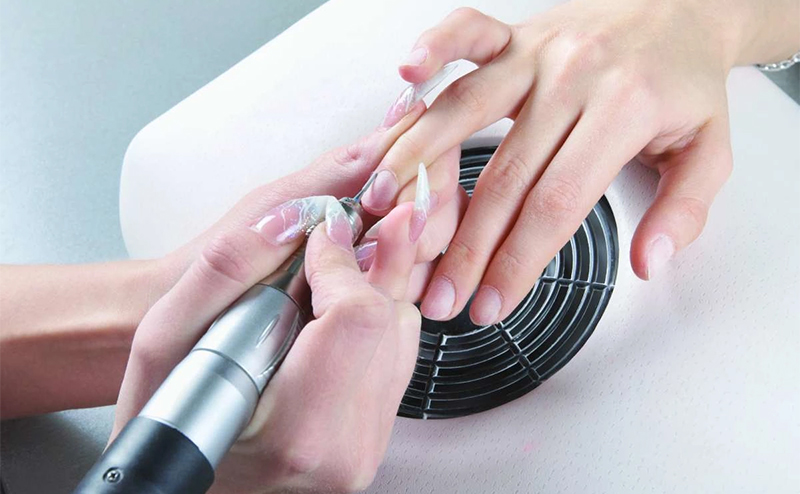
1. If you are a beginner and get a device for training or personal care, you can use a simplified model for home use with a speed of 20-25 thousand rpm and a set of ceramic nozzles of no more than 7 pieces.
2. Girls who have experience in hardware manicure can safely purchase a more advanced 60-watt homemade machine, giving out about 35-40 thousand rev / min. Such a device is already suitable not only for hand care, but also for pedicure.
3. Professionals working in the cabin or at home, will need powerful instruments (up to 100 W), capable of operating at a speed of about 40-60 thousand rev / min. These models are equipped with all the necessary functions and are completed with a large number of good nozzles of different rigidity and shape.
How much is a manicure machine
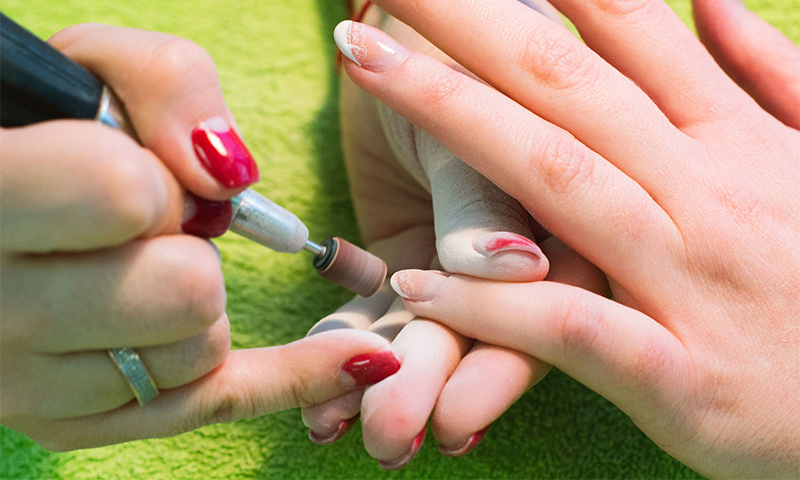
1. The budget version of the machine for the home can be found at a price of 800 rubles.
2. Units with complete diamond nozzles, giving a power of 30 W and about 20-35 thousand revolutions per minute, are sold for 1500-5700 rubles.
3. Mobile devices operating from a battery start from 6 and reach 18 thousand rubles (depending on the configuration and brand awareness).
4. Professional models with low revs (30,000 rpm) are priced from 14,500 to 22,000 rubles.
5. For the device, issuing 45-60 thousand revolutions per minute, have to pay about 20000-40000 rubles.
6. Models equipped with a vacuum cleaner are more expensive - about 70 thousand.
Replaceable cutters can be purchased separately:
1. Ceramic - from 350 rubles per piece;
2. Diamond - from 180;
3. Carbide milling cutter will cost at least 480 rubles per piece;
4. Replaceable abrasive caps are priced from 45 rubles, but under them you need a base attachment for 240.
It will be interesting to friends too




